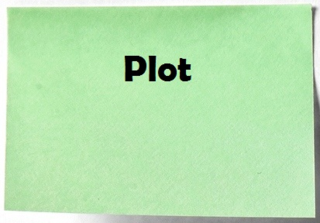Add 'big scenes' to give story some oomph
Does your story’s plot feel flat, as if there’s not enough build-up to the final, fateful act? The story probably lacks big scenes.
story’s plot feel flat, as if there’s not enough build-up to the final, fateful act? The story probably lacks big scenes.
A big scene occurs when the story’s drama – which occurs because it is central to the theme – is powerful. Because of this, a big scene is more than just flash and bang.
Think of one of the great big scenes of all time: the final battle between Luke Skywalker and Darth Vader in “Return of the Jedi”. It’s larger than any scene that has occurred before in the movie (perhaps larger than any scene in any of the six “Star Wars” movies, which is prefect as this is the last episode in the series). There’s more at stake than ever: Luke’s life, the lives of his friends such as Princess Leia and Han Solo, the fate of the rebels against the evil Empire. This scene, however, also is thick with thematic elements: son vs. father, the value of self-control vs. rampant emotions, and good vs. evil.
A big scene is more than just the story’s climax, however. Indeed, a big scene should come at regular intervals. Think of the rising action portion of a story’s plot. It’s not a steady, even climb up to the climax but a series of bumps, with a dramatic action that ascends and then falls only to build again. Each bump represents a big scene.
Usually each big scene is bigger than the last. That’s because as nearing the story’s climax, the main character must be increasingly pushed to make a final, do-or-die-like decision. Each of the story’s thematic points are increasingly explored and questioned.
Re-examine your own stories to see if there are big scenes in them. If not, reconsider how you’ve plotted the tales. Is there a more exciting way to tell the story by testing a thematic issue through suspenseful action in increasingly more dramatic ways?
Need an editor? Having your book, business document or academic paper proofread or edited before submitting it can prove invaluable. In an economic climate where you face heavy competition, your writing needs a second eye to give you the edge. I can provide that second eye.
Related articles
 Conflict: The heart of every story
Conflict: The heart of every story Consider using man vs. nature conflict in your story
Consider using man vs. nature conflict in your story How to form your story's basic structure
How to form your story's basic structure Select a viewpoint that gives you flexibility
Select a viewpoint that gives you flexibility Use bait-and-switch device carefully in stories
Use bait-and-switch device carefully in stories



